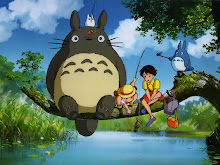The first thing about 4th Edition player races you're going to notice just by looking at the table of contents, is that Gnomes and Half-Orcs are gone. My guess is that they were the least popular of the original races. Gnomes, because they're the bard version of the halfling/dwarf comparison. And half-orcs, because while they're strong and powerful, they're portrayed as being ugly and physically unattractive. Like it or not, we're a visually-oriented species, and if you're going to make a character, they either have to be be good-looking from a human perspective, or they have to look COOL if they're not human-like in appearance.
The consensus, I suppose, is that half-orcs are neither good-looking or cool.
With those two races gone, they have been replaced by two new races (Eladrin and Dragonborn), and what I suspect is a favorite from 3rd edition (Tieflings). I'll get to the specifics of those new races later, but first, let's move onto the general changes one sees from the 3rd Ed standards.
No more racial penalties. All races have nothing but bonuses now. There are no more races which are inherently clumsier, less healthy, or less intelligent than other races. Part of the drive to engineer everything towards bonuses instead of penalties. It's not that your race is less intelligent. It's that the other race is inherently SMARTER. The half-full glass wins over the half-empty one.
They went out of their way to make all races attractive, both for roleplayers and straight up gamers, making it so that there's a reason to pick one race over another in many regards. Take the halflings, for example. Many new players of mine used to ignore them completely in 3rd edition. Here, they get the coveted "negate an opponent's critical hit" once per encounter. Being able to stop your foes from smacking you with a natural 20 once per fight is a BIG thing.
For roleplayers, the societal and cultural impact of the maximum lifespans of the long-lived races has been minimized by simply reducing said lifespans. Eladrin are the only race to live over 300 years, with elves and dwarves living to be about 200.
For the new races, let's begin with the Dragonborn. Obviously meant to replace the half-orc, they get the coveted +2 Str bonus on top of getting a bonus on Cha. They're a dragon-based reptilian race, which gives them a coolness factor half-orcs don't have, despite the fact that they look nonhuman. Getting to use dragonbreath once per encounter is also a plus.
The Eladrin might as well be called fae elves, though the book's alt terminology for them is high elf or gray elf. Technically, they split the characteristics of the 3E elves into two races. Eladrin get the quickness, the smarts, and the longsword skills. They also get the charm resistance and a new teleport ability. You want the woodland smarts and the archery? Stick to the original elves.
Lastly, the Tieflings are still the beings of infernal ancestry they were in the previous version of the game, more clearly so now given their large horns, but hey, that's cool too. Their abilities might be considered the weakest set of all the races, given that they have Intelligence and Charisma bonuses, but their racial ability is oriented to physical combat. This is not to say that they're not a good race, but I predict they'll be the least attractive of the basic races offered in this first handbook.
One last comment. About the humans? Still the excellent default choice. Good show, WotC.
MTG: Final Fantasy
1 month ago



No comments:
Post a Comment